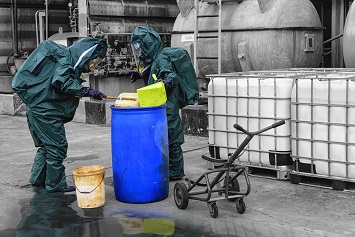Peter Wright, assistant administrator of the EPA’s Office of Land and Emergency Management (OLEM), announced the 2030 Vision and Goals for the Resource Conservation and Recovery Act (RCRA) Corrective Action hazardous waste facility cleanup program at the Association of State And Territorial Solid Waste Management Officials 2020 RCRA Corrective Action Virtual Conference on September 1, 2020.
RCRA, signed into law in 1976, set responsible waste management standards and established hazardous waste safeguards that cover all aspects of waste management, from generation to treatment, transportation, disposal, and storage. RCRA’s Corrective Action “requires facilities that treat, store or dispose of hazardous wastes to investigate and clean up any contamination on or from the facility” and covers approximately 4,000 facilities throughout the United States.
The 2030 New Vision announced at the conference stated that “RCRA Corrective cleanups support healthy and sustainable communities where people and the environment are protected from hazardous contamination today and into the future,” according to the EPA press release. “The new goals provide expectations and objectives for the RCRA Corrective Action Program to strive for and complete over the next ten years. EPA has laid out five goals for the program for this ten-year timeframe, related to:
- Ensuring that RCRA Corrective Action cleanups are initiated and completed expeditiously.
- Eliminating or controlling adverse impacts beyond the facility boundaries.
- Ensuring land within the facility boundaries will be safe for continued use or reasonably foreseeable new uses.
- Identifying and implementing the key elements of effective Long-Term Stewardship for Corrective Action.
- Regularly adjusting the universe of facilities in the cleanup pipeline to reflect current program priorities.”
The EPA hosted nine discussions with groups including federal, state, tribal, and local government officials; environmental justice representatives; and regulated industry representatives to incorporate partner and stakeholder input into the new 2030 Vision and Goals.
2020 Goals
Wright also commended the Agency’s progress toward its 2020 RCRA cleanup goals.
“EPA, working with our state partners, has made tremendous progress towards achievement of key milestones set for 2020 in the remediation of historic contamination at hazardous waste sites,” Wright said. “I am confident this vision and accompanying goals for the next 10 years of the RCRA Corrective Action Program will provide clear direction and measurable milestones that will energize all stakeholders to achieve these cleanup measures that protect human health and the environment and support healthy communities.”
The EPA’s goal for its 2020 Initiative was remedy construction at 95% of 3,779 facilities by 2020. To qualify as remedy construction, the EPA or an authorized state issues a written acknowledgment that “(1) the facility has completed construction of a remedy that was designed to achieve long-term protection of human health and the environment for the entire site, and (2) the remedy is fully functioning as designed, whether or not final cleanup levels or other requirements have been achieved,” according to coxcolvin.com.
The EPA offers the following projections target for 2020:
- Human Exposures Under Control: projected to be met by 96% of facilities
- Migration of Contaminated Groundwater Under Control: projected to be met by 91% of facilities
- Remedy Construction: projected to be met by 79% of facilities
Visit the EPA’s RCRA Corrective Action Cleanup Program site for more information.

